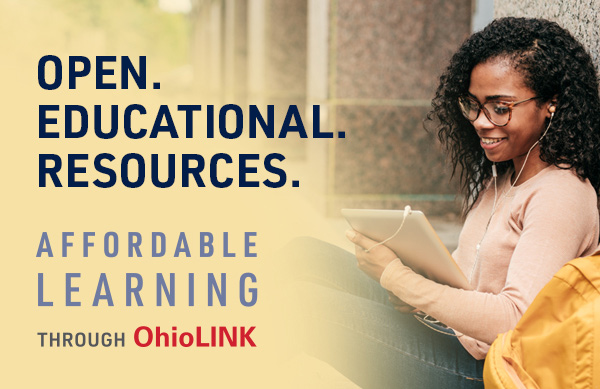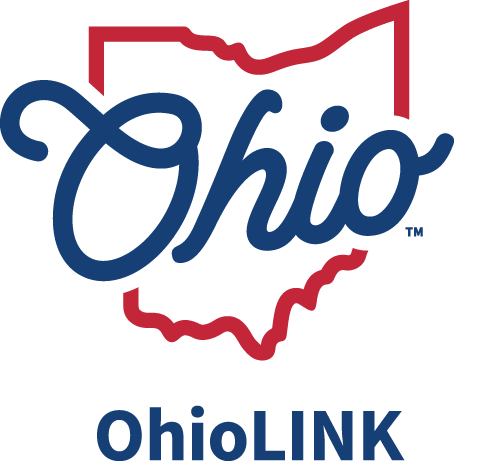As part of the ongoing OhioLINK Membership Summit, OhioLINK recently participated in the “Communicating Your Library’s Value” webinar panel, moderated by The University of Akron. This topic is a particularly important one for libraries as they navigate ongoing pandemic-related budget challenges and the continuing evolution of the library’s role in the higher education ecosystem.
Five panelists discussed their strategies for promoting their library’s value and impact and highlighted success stories, including identifying and working with stakeholders, the role of storytelling, utilizing usage data, the power of comparative data, and demonstrating value through strategic planning.
Sean Kennedy, collections and content strategies librarian at the University of Akron, began the talk by discussing the common sentiment that expressing library value can be complex.
Kennedy explained that value can be derived from quantitative data, feelings, and connections that users express about the library, qualitative data, and financial data. Additionally, he highlighted the importance of identifying the proper stakeholders and communicating the input, output, outcome, and impact from library initiatives.
Aimée deChambeau, dean of university libraries at the University of Akron, followed up by discussing how once the elements of value have been identified, a straightforward process of storytelling can begin.
“One of the parts of the formula for telling a story effectively and communicating value is to pick somebody to represent the service you’ve provided. It personalizes the problem and individualizes it and brings it home to the actual audience,” said deChambeau. “You also want to tie your story back to statistics or some other kind of data…this lends validity and truthfulness to what you’re telling your audience about the resources or the services you’ve provided to them.”
An example deChambeau highlighted at the University of Akron was the partnership between the library and the Akron Art Bomb Brigade on a new mural. Throughout the project, the library documented the student learning experience and the library’s efforts to support it.
“Being able to tell this story was an outcome that we wanted to be able to manage well. And so, we planned for it throughout the entire process. So that’s a good example of working backwards,” deChambeau said.
Panelists also highlighted the power of data visualization. Joanna Voss, associate director of licensing and analytics at OhioLINK, discussed the necessity of using data in a digestible, understandable way to best communicate a library or consortium’s value.
“We don’t want to share a wall of text or data overload. We want to really bring it back to accounts of students and researchers,” said Voss. “We can take these measurements, such as millions of downloads, and make them relatable. So, normalize that by the number of students served, talking about impact per person, impact per day or second.”
Voss also discussed the importance of ensuring simplicity and clarity in value messaging by collaborating with other non-librarian communicators within a university or consortium. For example, OhioLINK engages with the Ohio Technology Consortium’s (OH-TECH) communications team and outside communications consultants to frame and construct messaging.
The necessity for strategy in value communication was echoed by all the panelists. The University of Toledo’s Dean of Libraries, Beau Case, discussed how their library system has adapted to serving multiple parts of the university to further demonstrate what they are capable of and what benefits they bring to the campus.
“Our vision is quite simple. We want to leverage our core assets, which are collections, expertise, programming, services, spaces and technology, and we want to integrate these into all of the core mission-driven activities of the university,” said Case. “We are engaging on campus, we have a lot of partnerships, and this leads to more opportunity.”
For example, Case and his team have greatly aided the research office by helping identify new areas of research excellence on campus and discovering faculty publishing noteworthy articles.
Neil Romanosky, dean of university libraries at Ohio University, walked through the importance of strategic planning for their library system. While the past year has been unique due to the pandemic, it provided the libraries an opportunity to renew their mission and align their strategy and goals with that of the university to communicate their value.
“The process led us to a renewed mission for the library. Connection, empowerment and sustainability are highlights of the library’s culture going forward and are really the bedrock of our plan,” said Romanosky. “We see ourselves as a catalyst, a connector for research, creativity, knowledge, discovery and student success and transformation, all things which are priorities for the institution as well as in our strategic directions and within the colleges and different departments.”
The June 24 webinar was part of the OhioLINK Summit, an annual meeting that connects staff from OhioLINK member institutions and provides the opportunity for participants to share ideas, brainstorm future initiatives and reflect on the past year’s accomplishments. Due to COVID-19, the OhioLINK Summit has adapted to an online format. Nine webinars will be held May through August.
If you are interested in upcoming OhioLINK Summit webinars, please visit OhioLINK’s member extranet for the full schedule (log-in required).
About OhioLINK: Connecting libraries, learning and discovery
Established in 1992, the Ohio Library and Information Network (OhioLINK) is Ohio’s statewide academic library consortium, serving 88 institutions plus the State Library of Ohio. Delivering both IT infrastructure and content negotiation, OhioLINK provides students, researchers, faculty, and staff with access to valuable digital research collections at a fraction of the cost if those collections were purchased by individual institutions. OhioLINK also connects library services, print and digital collections among its member institutions and manages collaborative services aimed at reducing students’ cost of higher education in Ohio, including eTutoring and Affordable Learning. A member of the Ohio Technology Consortium of the Ohio Department of Higher Education, OhioLINK creates a competitive advantage for its member institutions and supports student and researcher success across Ohio. Learn more at ohiolink.edu.

